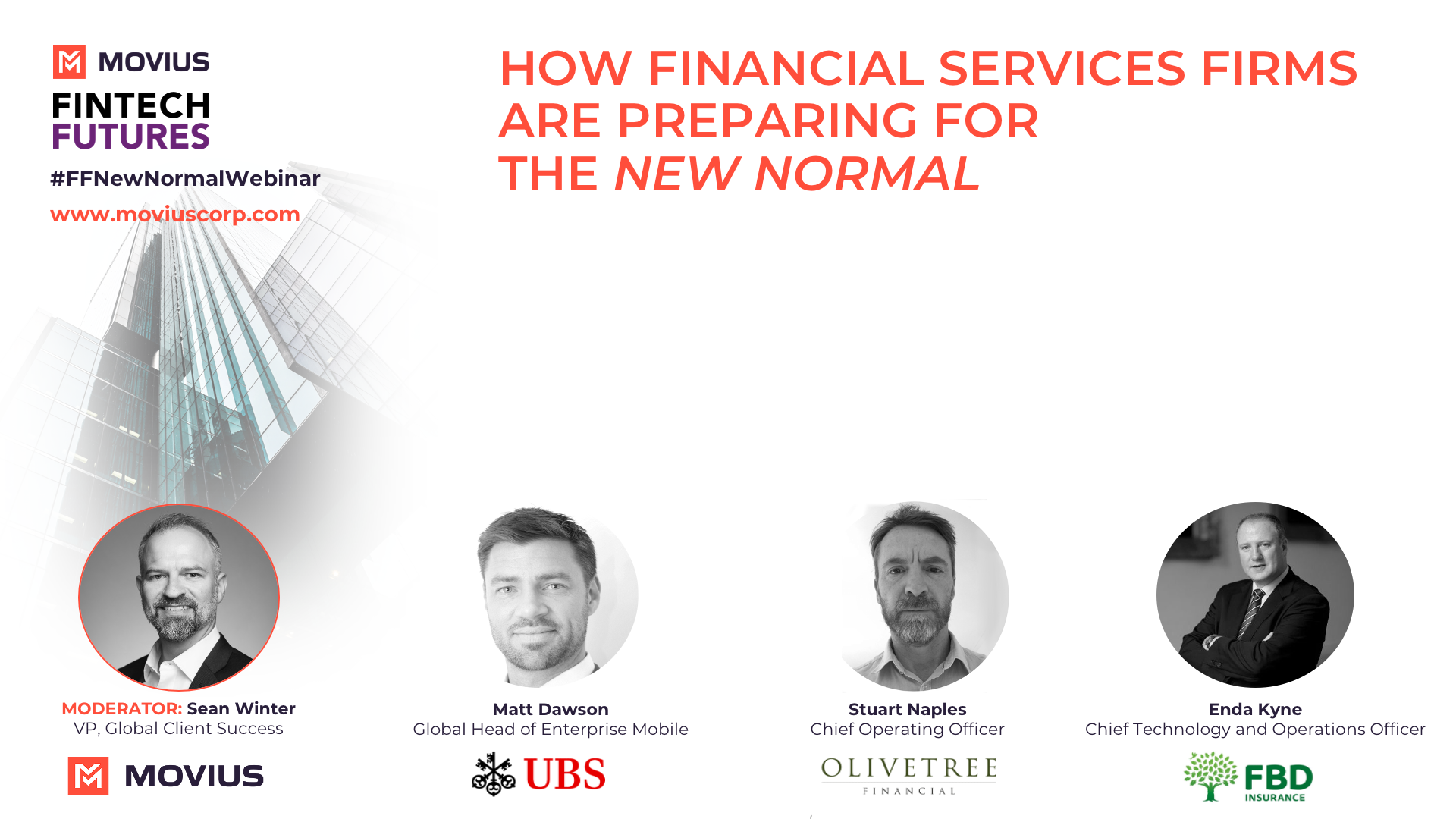COVID-19 has really disrupted businesses across the world. As we slowly start to transition to a new way of working, Movius had the pleasure to sit down with 3 key financial executives from UBS, Olivetree and FBD Insurance to discuss the “new normal” that we face. You can listen to the recording of the discussion by following THIS LINK.
While these gentlemen were discussing how organizations have adapted to these changes and what their businesses will be like moving forward, I had some thoughts of my own. As an former HSBC employee for 25+ years, I understand the pressure financial institutions must have felt when COVID-19 hit and the confusion on where to go from here.
When COVID-19 hit, how did financial institutions adapt to the changes?
As with most organizations, financial institutions have contingency plans for major disruption. But however many times these were rehearsed I can’t imagine it fully prepared them for the first couple of weeks into the COVID-19 lockdown. I have the utmost respect for IT teams all over the world who would have worked tirelessly to ensure their (internal) customers could carry on working. It would have required the supply of hundreds , if not thousands of pieces of IT equipment to staff who were already beginning to be home based – so you had the issue of mass deployment but with added complexity of getting the equipment to employees.
This epidemic also showed the true value of cloud-based applications and virtual desktops. The ability to deploy to many, administer and support all from one location and all those who had this breathing a (slight) sigh of relief and those that hadn’t rushing to get something in place.
How did this pandemic change how institutions communicated (and still communicate) to their end clients?
There’s no face to face – so that’s the one big change!!! But as before when that wasn’t an option, client communication is still audio call and ensuring it’s recorded. In the office that would have been via a recorded dealerboard. Now at home, it’s mobile recording only. That was previously just for out-of-hours conversations. Now it’s all client conversations. Internal collaboration can be via video but the audio and any instant messenger chat alongside will need to be recorded. This has been the struggle for many financial institutions, how do you record ALL business mobile phone conversations without risking the personal side of the phone? One of our customers, Cantor Fitzgerald Ireland talks about the value of easy compliance by using MultiLine.
With the slow movement back to the “new normal,” what will this look like for financial institutions?
I’d definitely say a mixed approach to home and office work. For all, not just those that could “WFH” before. I think now, just as there is with schools, public transport etc. social distancing is requiring us to provide extra space. So with that the previously stacked office environment will become a thing of the past. More space in between desks, organized queues at elevators (that one is a blessing – and anyone that’s queued for a lift in some of the Canary Wharf offices will know exactly what I mean) and more than likely staggered or alternate working patterns. Team A in the office wk1 and Team B wk2. The world has already proven to itself that we can adapt and keep the wheels turning, it won’t be any different. The office environment and how we work will need to adapt. I’ve heard that co-working areas, hot desk etc. may be out. If that’s the case, I certainly hope it’s only temporary as that was an initiative that was really revolutionizing the office environment. It would be a shame if we lost that.
Major disruptions to the economy often lead to periods of massive innovation. What innovations could come out of this pandemic?
I see digital transformation really becoming reality and not some marketing buzz term as it was years ago. Organizations will start moving more services to the cloud where they can be effectively delivered quickly at scale, but from a remote location. I see a major shift in moving on-premise infrastructures to the cloud. This is where cloud vendors will need to prove their security models and how they defend against cyber attacks. With the migration of data to the cloud, consumers and employees will have access to information wherever and whenever they want. This will be the biggest innovation – the work anywhere, compliant everywhere approach. New and improved ways for employees to collaborate, stay connected and be even more productive in their role. New innovations in Bring Your Own Device, video meetings with clients becoming the norm and a revolution in working practices – roles that do not require regular office attendance becoming fully home based with only occasional face to face catch ups.
